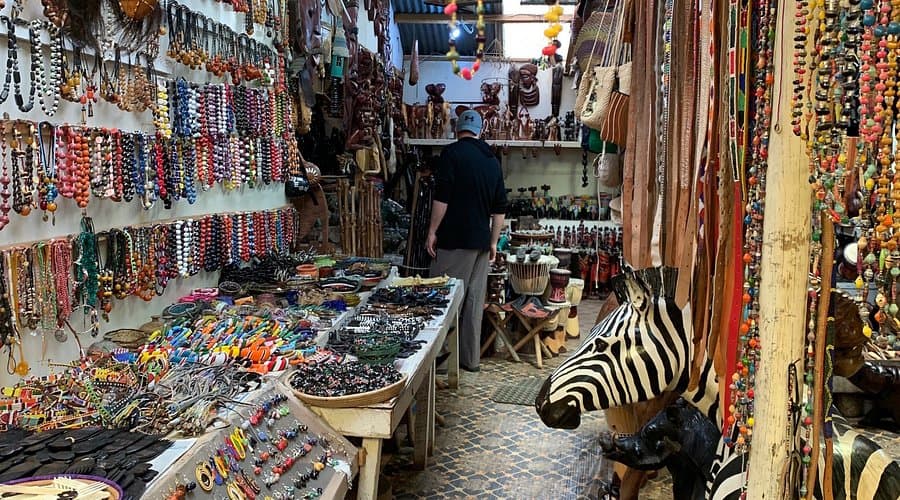Loading News Article...
We're loading the full news article for you. This includes the article content, images, author information, and related articles.
We're loading the full news article for you. This includes the article content, images, author information, and related articles.
A recent Saffronart auction in Delhi achieved a record-breaking $40.2 million, highlighting a booming Indian art market. This surge offers valuable lessons and potential opportunities for Kenya's evolving art scene, which is increasingly gaining local and international recognition.

The global art world is abuzz following a landmark Saffronart auction in Delhi, India, which fetched an unprecedented $40.2 million (approximately KES 5.9 billion) – the highest-ever total for South Asian art. Headlining this historic sale was an untitled 1971 painting by Vasudeo Santu Gaitonde, which alone commanded $7.57 million (approximately KES 1.1 billion), nearly tripling its initial estimate and making it India's second most expensive painting. This record-breaking event underscores a significant boom in the Indian art market, driven by robust economic performance and a growing interest from both local and diaspora collectors.
The Indian art market, valued at approximately $338 million (around KES 49.7 billion) currently, is projected to expand to $1.1 billion (about KES 161.7 billion) by 2030. This growth is fueled by a surge in art fairs, galleries, and exhibition spaces across Indian cities, attracting new buyers, with Saffronart reporting that 25-30% of its buyers are recent entrants.
While India's art market experiences this rapid ascent, Kenya's art scene, though smaller, is also undergoing a renaissance. Historically, Kenya's art market has been less vibrant, with fewer galleries actively staging exhibitions. However, a gradual cultural liberalisation, coupled with a growing middle class and an influx of expatriates, has spurred a renewed interest in local artwork and creative experiences. The Kenyan government, through initiatives like the Creative Economy Support Bill, 2024, aims to further boost the creative industries by creating a supportive environment, investing in infrastructure, and facilitating market access for artists.
The Creative Economy Support Bill, 2024, currently before Parliament, seeks to establish a dedicated Creative Fund and obligates both national and county governments to promote a diverse creative industry. This includes formulating policies, developing entrepreneurial skills, and reviewing existing policies that hinder growth. The Cabinet Secretary for the Ministry of Youth Affairs, the Arts and Sports is mandated to establish an online platform for advertising events and providing industry highlights. Additionally, the Sports, Arts and Social Development Fund (SASDF), established under the Public Finance Management Regulations, 2018, provides funding for the promotion and development of arts, including capacity building and market linkages.
Kenyan artists and art enthusiasts are increasingly leveraging online platforms to showcase and sell their work, reaching wider local and international audiences. Organizations like the Kenya Cultural Centre (KCC), supported by programs like ACP-EU IGNITE Culture, are developing formal curricula for art forms like poetry, which has emerged as one of Kenya's fastest-growing art forms. Artists like Rosetta Aeco, whose work is displayed at the National Museums of Kenya, have observed a significant shift in support, particularly from young Kenyans.
While the Indian art market's boom presents an exciting precedent, the Kenyan market faces unique challenges. An earlier report in the Financial Times suggesting a Kenyan art market boom was deemed overstated by Artnet's Price Database, indicating a shrinking market without the sales of international star artist Wangechi Mutu. Issues such as counterfeiting, intellectual property infringement, and the logistics and high costs of shipping delicate artworks pose threats to the online art market in Kenya. Furthermore, the Creative Economy Support Bill, 2024, has been noted to have policy gaps regarding the integration of AI into cultural heritage preservation.
The long-term sustainability of the current growth trajectory in both markets remains a subject of discussion. In Kenya, while government initiatives are underway, the effectiveness of these policies in creating a truly thriving and equitable art ecosystem is yet to be fully realised. Concerns about equitable access to funding and market opportunities for all artists, particularly emerging talents, persist. The exact impact of global economic shifts on the nascent Kenyan art market also remains to be seen.
The 19th Affordable Art Show is scheduled for Friday, October 24 to Sunday, October 26, 2025, at the Nairobi National Museum. The Creative Economy Support Bill, 2024, and the Culture Bill of 2024 are currently before Parliament and are expected to be enacted soon. The National Museums of Kenya will also host the 1st International Investment Conference and Trade Fair on Indigenous Knowledge Intellectual Assets in 2026.
Observers will be closely watching the implementation of the Creative Economy Support Bill, 2024, and its impact on artists' earnings and market access in Kenya. The continued growth of online platforms and local art fairs, such as the Affordable Art Show, will be key indicators of the market's vitality. The engagement of the Kenyan diaspora in supporting local art, mirroring the trend seen in India, could also significantly influence future growth.
Kenya's creative economy is growing at a rate 60% faster than other global economies, highlighting its significant potential for GDP contribution and job creation. Efforts to formalise arts education and provide capacity-building programs, such as those by the Kenya Cultural Centre, are crucial for unlocking this potential.
Keep the conversation in one place—threads here stay linked to the story and in the forums.
Other hot threads
E-sports and Gaming Community in Kenya
Active 6 months ago
Popular Recreational Activities Across Counties
Active 6 months ago
The Role of Technology in Modern Agriculture (AgriTech)
Active 6 months ago
Investing in Youth Sports Development Programs
Active 6 months ago